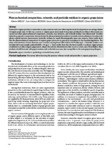Please use this identifier to cite or link to this item:
http://www.alice.cnptia.embrapa.br/alice/handle/doc/1015288Full metadata record
| DC Field | Value | Language |
|---|---|---|
| dc.contributor.author | MIELE, A. | pt_BR |
| dc.contributor.author | RIZZON, L. A. | pt_BR |
| dc.contributor.author | QUEIROZ, S. C. do N. de | pt_BR |
| dc.contributor.author | GIANELLO, C. | pt_BR |
| dc.date.accessioned | 2015-05-13T11:11:11Z | pt_BR |
| dc.date.available | 2015-05-13T11:11:11Z | pt_BR |
| dc.date.created | 2015-05-13 | pt_BR |
| dc.date.issued | 2015 | pt_BR |
| dc.identifier.citation | Food Science and Technology, Campinas, v. 35, n. 1, p. 120-126,jan/mar. 2015. | pt_BR |
| dc.identifier.issn | 0101-2061 | pt_BR |
| dc.identifier.uri | http://www.alice.cnptia.embrapa.br/alice/handle/doc/1015288 | pt_BR |
| dc.description | Demand for organic products is intensified in many countries each year. Following this trend, Brazil produces increasing volumes of organic grape juice. In this way, a survey of organic grape juices made from grapes produced according to this system was carried out where physicochemical composition, minerals, trace elements, and pesticide residues were determined. Variables related to grape juice composition were performed by physicochemical procedures; minerals and trace elements, by inductively plasma optical emission spectrometry; pesticide residues, by liquid chromatography-mass spectrometry. Main results show that the physicochemical composition of organic grape juices was in general in accordance to the Brazilian legislation. The mean concentrations of trace elements were very low, varying from 0.002 (Cd) to 0.970 (Ba) mg L?1. Pesticide residues were not detected in any sample analyzed (MRL= 10 μg L?1). These results show that the Serra Gaúcha viticultural region present conditions to produce organic grape juices, despite the adverse climate factors that occurs in some years. Nevertheless, these products should be made with grape varieties, such as the labrusca ones, less susceptibles to the main grapevine pathogens. | pt_BR |
| dc.language.iso | por | pt_BR |
| dc.rights | openAccess | pt_BR |
| dc.subject | Metais pesados | pt_BR |
| dc.subject | Viticultura Orgânica | pt_BR |
| dc.subject | Agrobiologia | pt_BR |
| dc.subject | Minerais | pt_BR |
| dc.subject | Agrobiology | pt_BR |
| dc.subject | Organic viticulture | pt_BR |
| dc.title | Physicochemical composition, minerals, and pesticide residues in organic grape juices. | pt_BR |
| dc.type | Artigo de periódico | pt_BR |
| dc.date.updated | 2016-02-29T11:11:11Z | pt_BR |
| dc.subject.thesagro | Viticultura | pt_BR |
| dc.subject.nalthesaurus | Minerals | pt_BR |
| dc.subject.nalthesaurus | Heavy metals | pt_BR |
| riaa.ainfo.id | 1015288 | pt_BR |
| riaa.ainfo.lastupdate | 2016-02-29 | pt_BR |
| dc.identifier.doi | http://dx.doi.org/10.1590/1678-457X.6540 | pt_BR |
| dc.contributor.institution | ALBERTO MIELE, CNPUV; SONIA CLAUDIA DO N DE QUEIROZ, CNPMA. | pt_BR |
| Appears in Collections: | Artigo em periódico indexado (CNPUV)  | |
Files in This Item:
| File | Description | Size | Format | |
|---|---|---|---|---|
| MIELEfoodsciencetechnologyv35n1p120126janmar2015.pdf | 1.31 MB | Adobe PDF |  View/Open |









